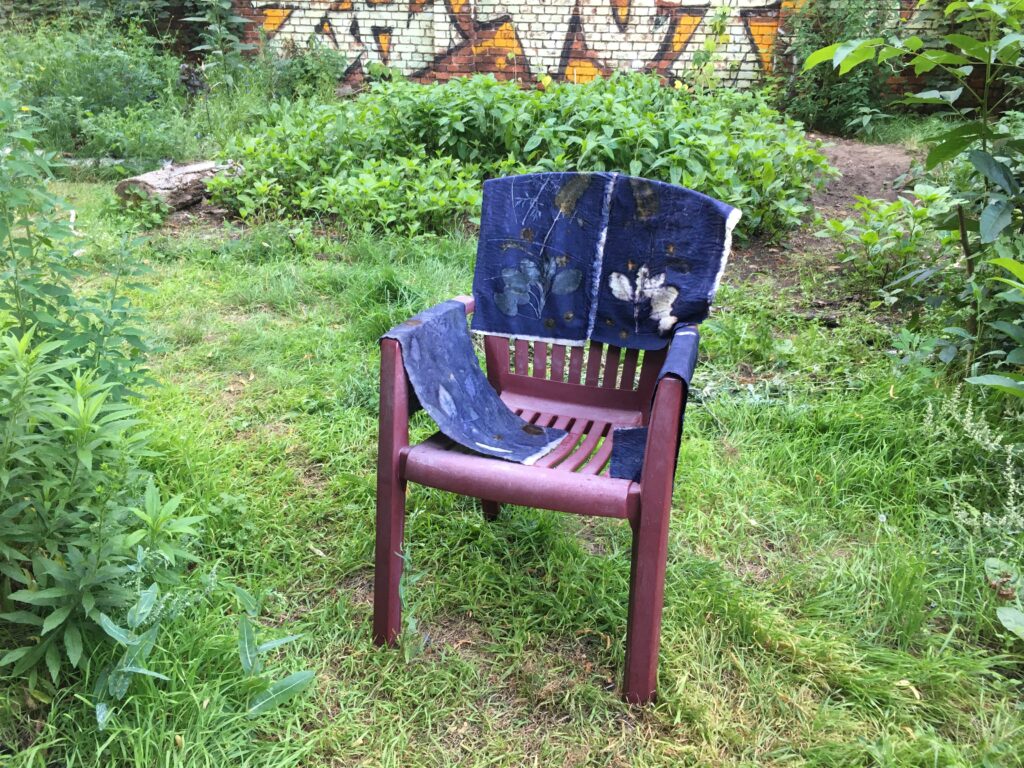
August 13
Madlen has offered a natural dye workshop at the FärbeHütte. This is our first hands-on dye workshop. In this workshop, we tried Eco printing using gallnut tannin dye and iron dye with plant as resist/print, onion skin and dyers cosmos, Schöneauge flower dye. She showed us also how PH shifting works using red cabbage juice with vineger/natron as PH shifters.
The very important and tricky thing with natural dye is that one has to scour (washing) and mordant (for natural dye, you do not need mordant for indigo dye). This process require mineral chemicals (soda ash and ph neutral detergent for scouring, Alum or Aluminumtriformate for mordanting) and we can not do this at Elisabeet as we do not have drainage system. Madlen has explained each process, and we used already scoured and mordanted cotton fabric that Madlen has prepared for us. (thanks Madlen! that is a lot of work!)
The fabric dyed with cosmos became bright orange. Some participants tried shibori before dropping into the pot and it made a beautiful pattern on the fabric. Onion skin made nice yellow tone. some added the dyed fabric into the iron bath afterwards, and iron added dark shade to it.
Eco print is an interesting technique. You prepare two same size fabric. one of them is dipped in tannin bath (we used gallnut powder) and the other is dipped in iron bath. At this point, both fabric looks not colored. Place a plastic sheet on a table and spread one of the fabric. Place plants that you gathered from the garden. These plants serves as stencil for prints (remains white shadow) but some of them also give color to the fabric. This depends if the plant has tanning or other dye color substance or not. After placing the plants, place the other fabric on top and roll them together tightly using wooden stick as core. Then tightly tie this roll with string and place it in a steamer. I am not sure how long we steamed them.. I would say ~30min?
After steaming is done, cool it down and unroll them. Tannin and Iron react with each other when steamed and it becomes dark purple color. Where the plants are placed, the iron and tanning do not meet and it remains white. It was always a surprise when unrolling to see what comes out. Some made a clear shape print, some were fuzzy. Some gave surprising additional tone.
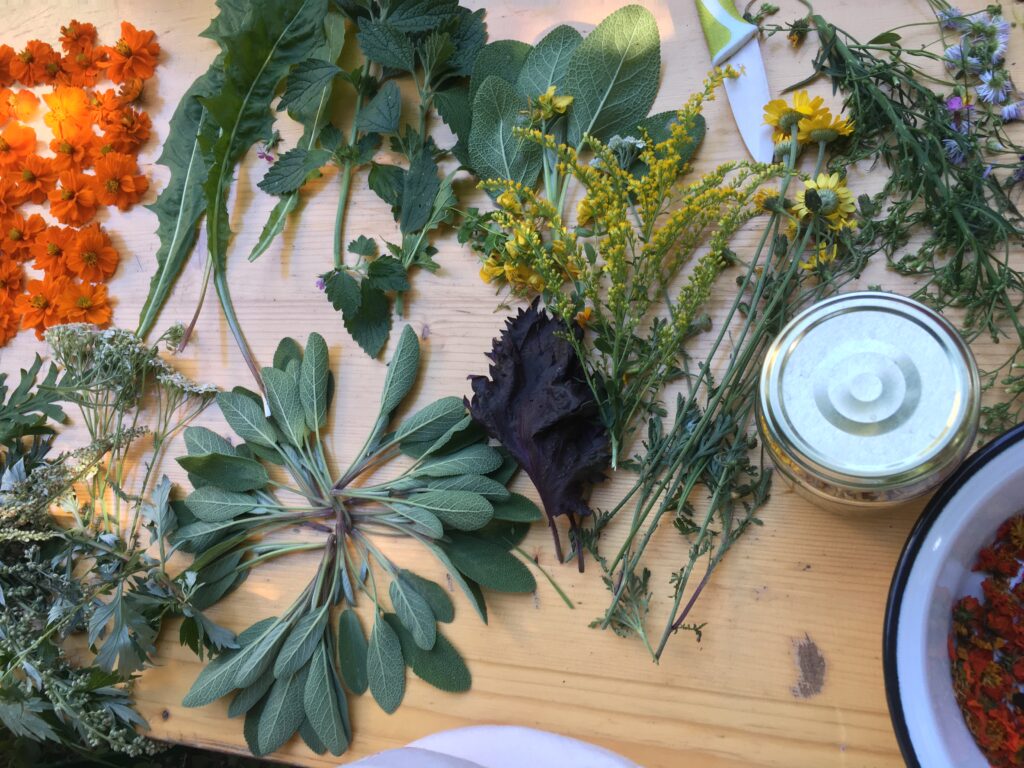
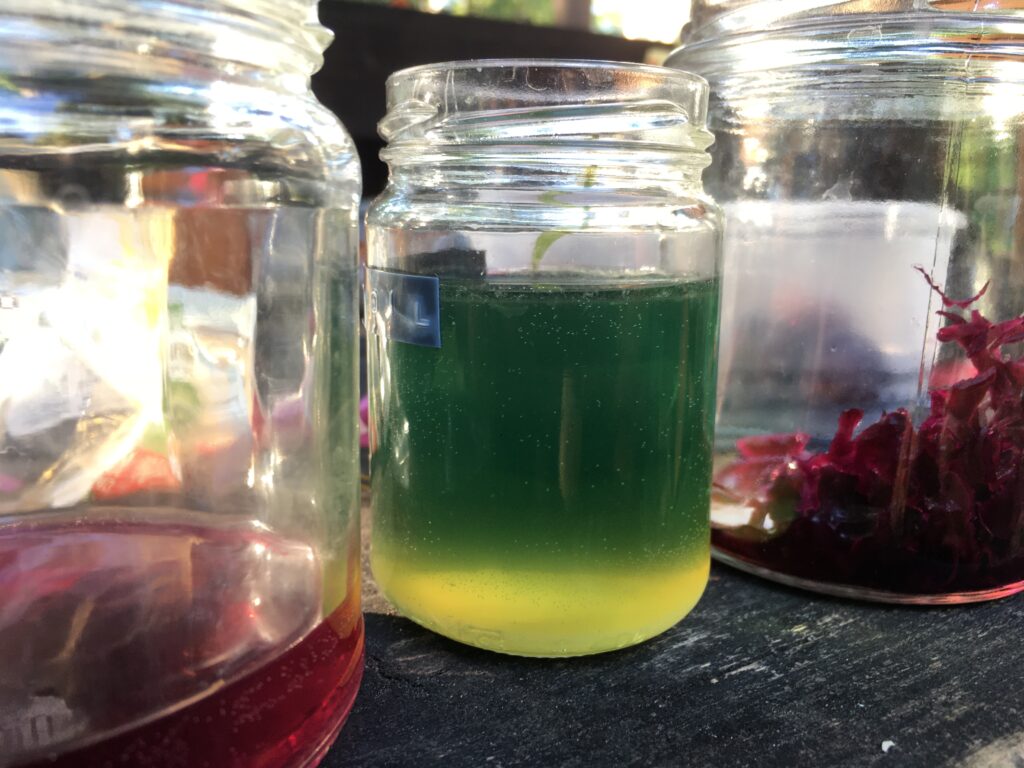
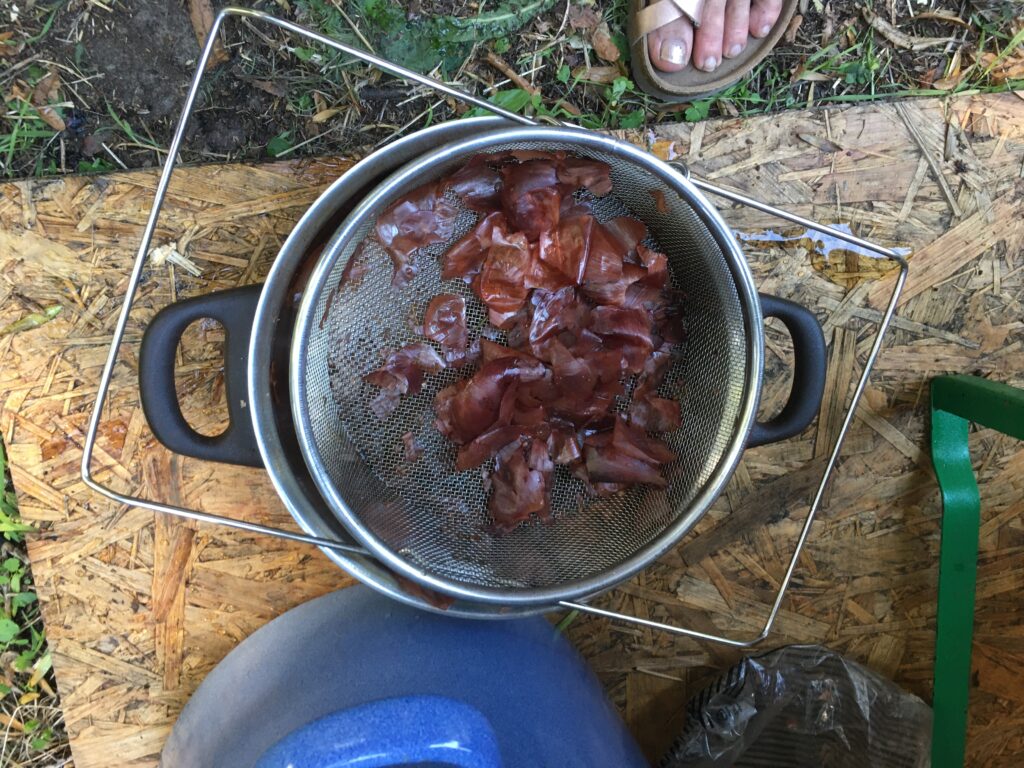
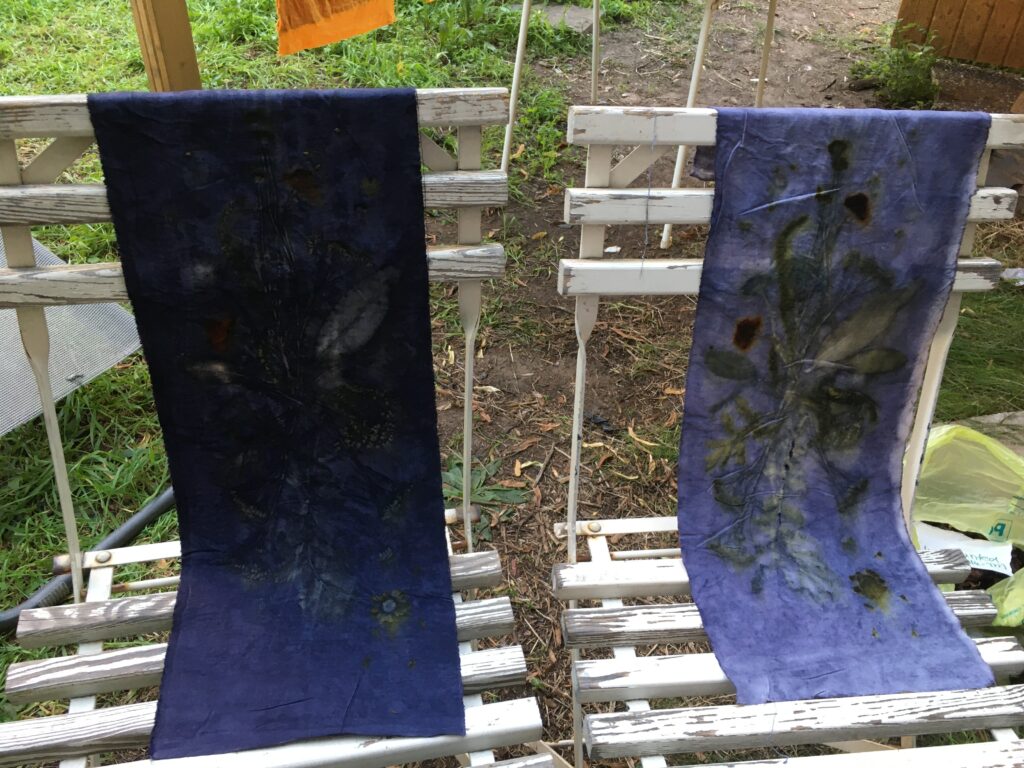
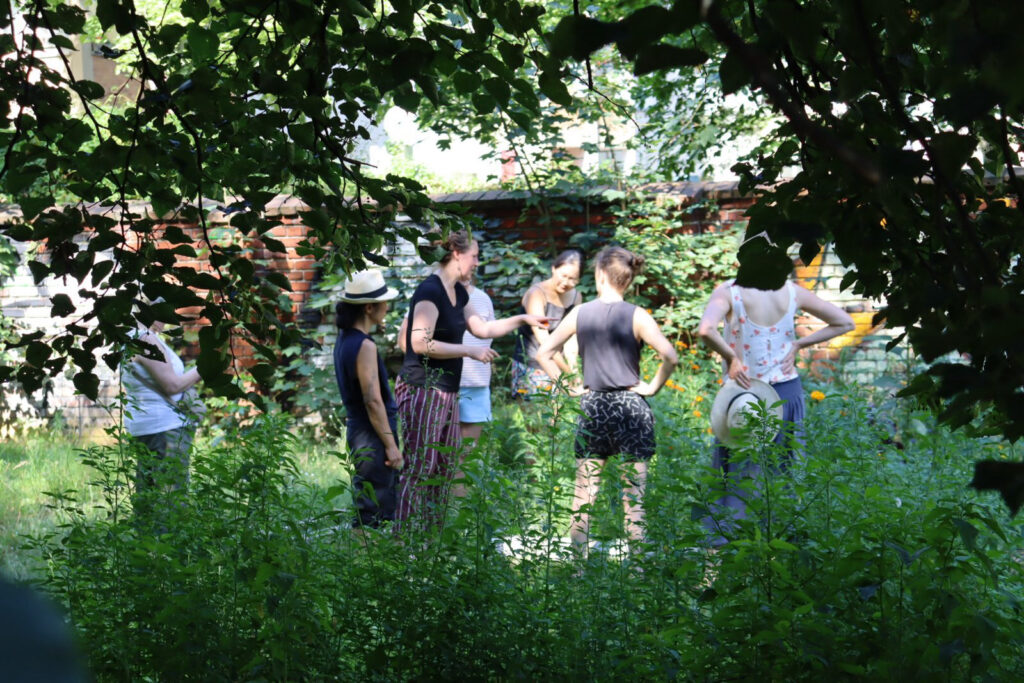

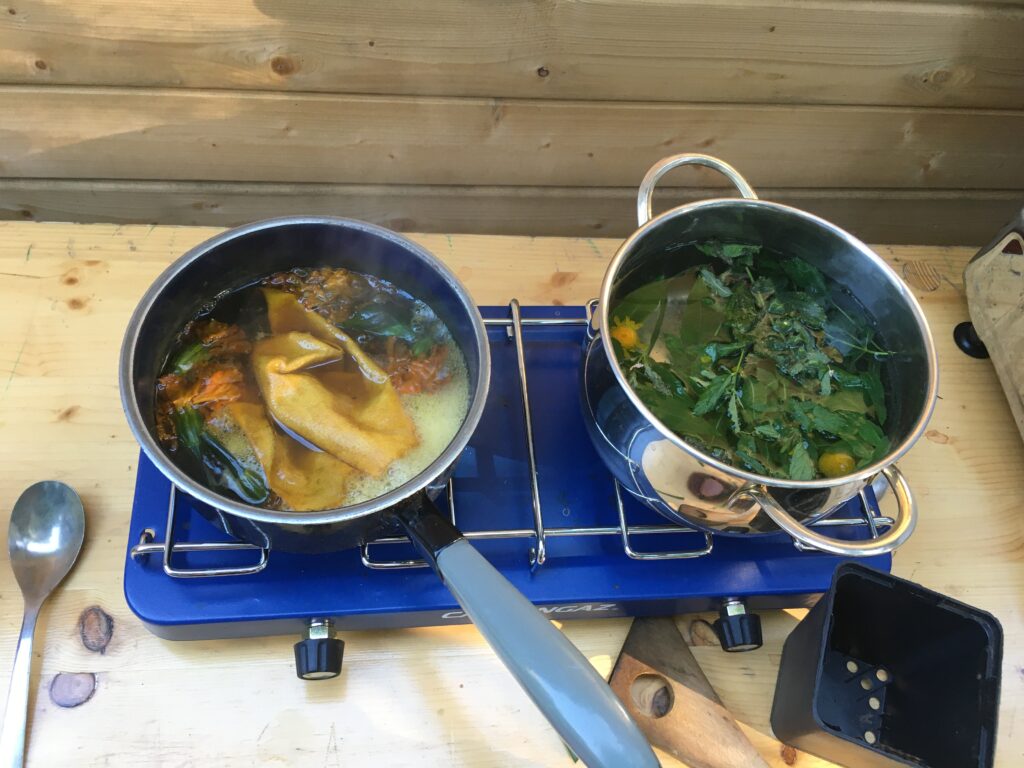
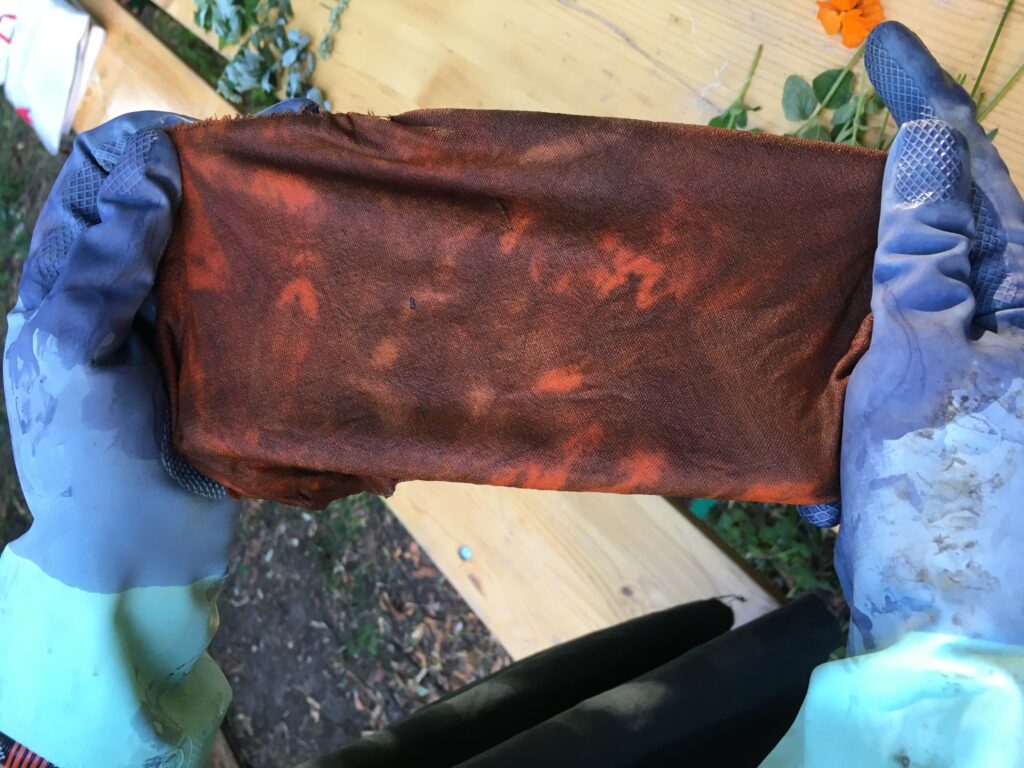

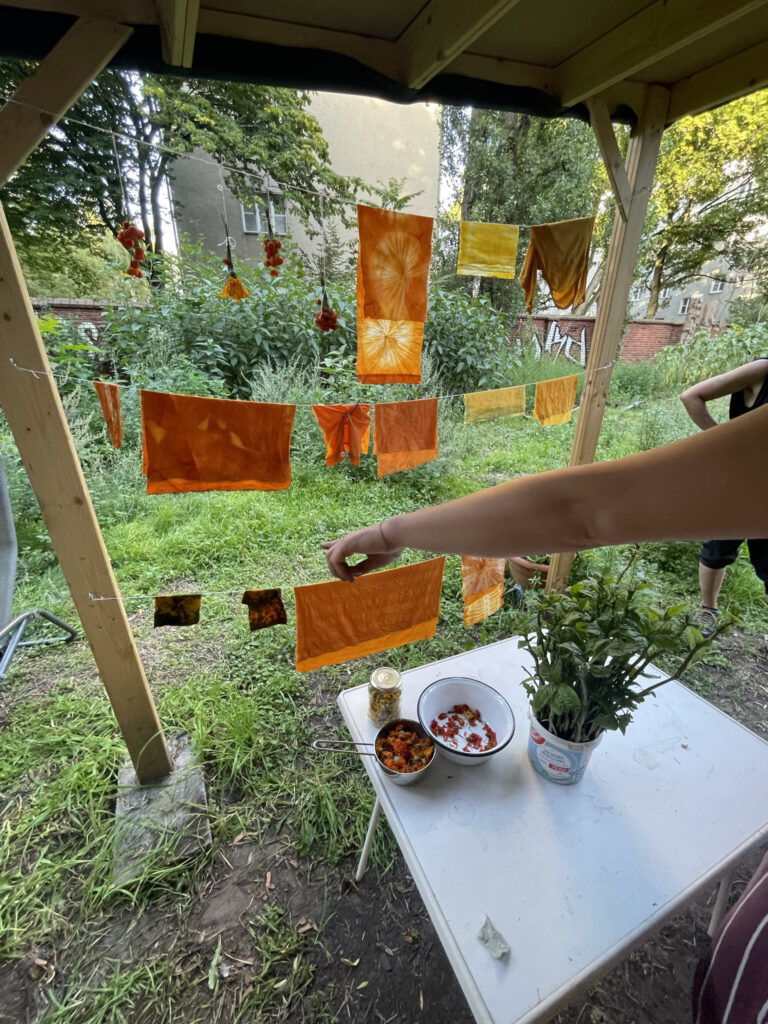
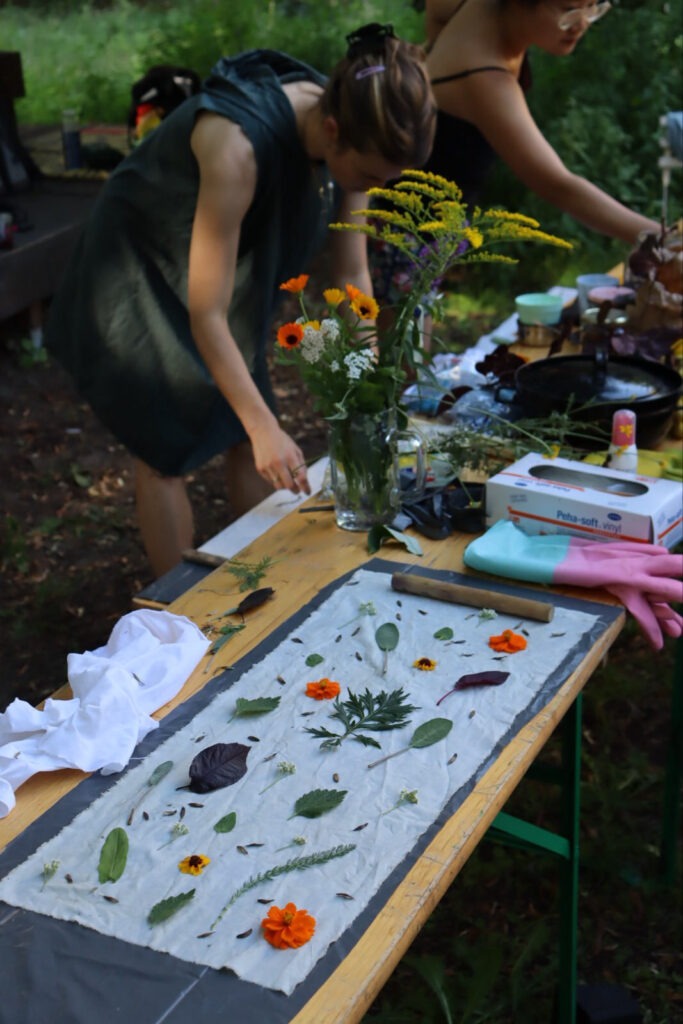
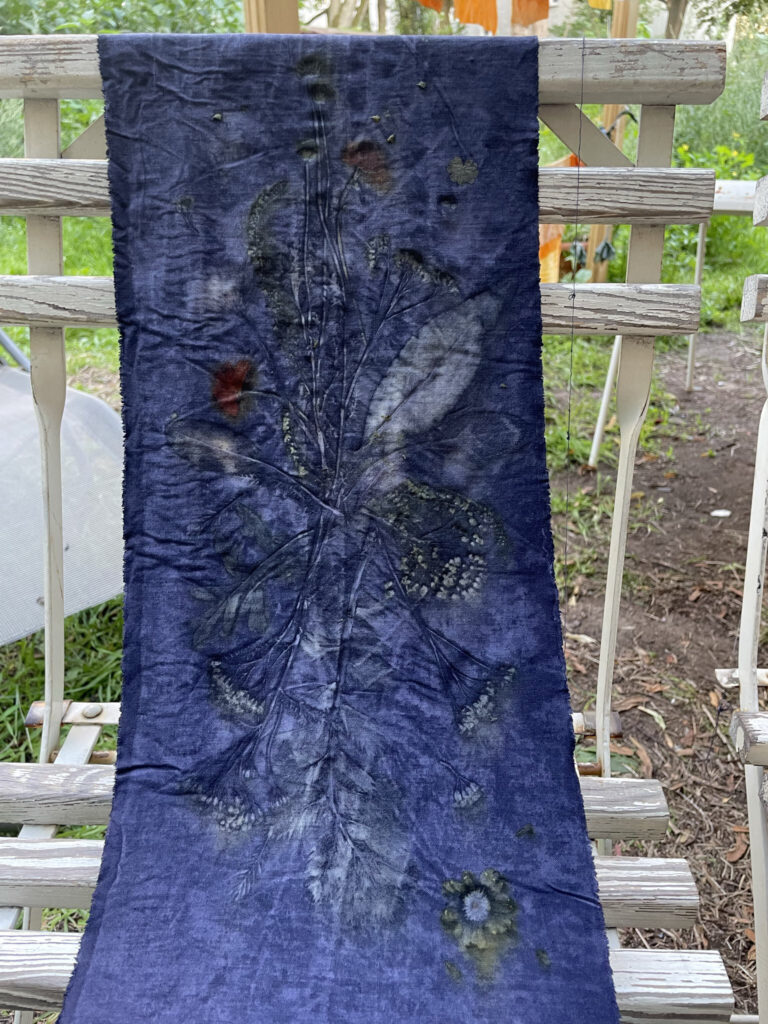
Mika also made a spontaneous indigo workshop with the small 20L vat. This was the first time for a lot of participants to work with natural indigo. we made a quick Shibori with cotton fabric and dyed 2 times (2min, 5min interval) with indigo. We were quite overwhelmed with the smell of indigo 😉 yes, it is stinky!
Actually this is our official first Elisabeet Blue! well, the color is not made here yet, and the fermentation was done at my bathroom… so maybe it is not quite Elisabeet blue yet, but it is our first blue experience at the Elisabeet!
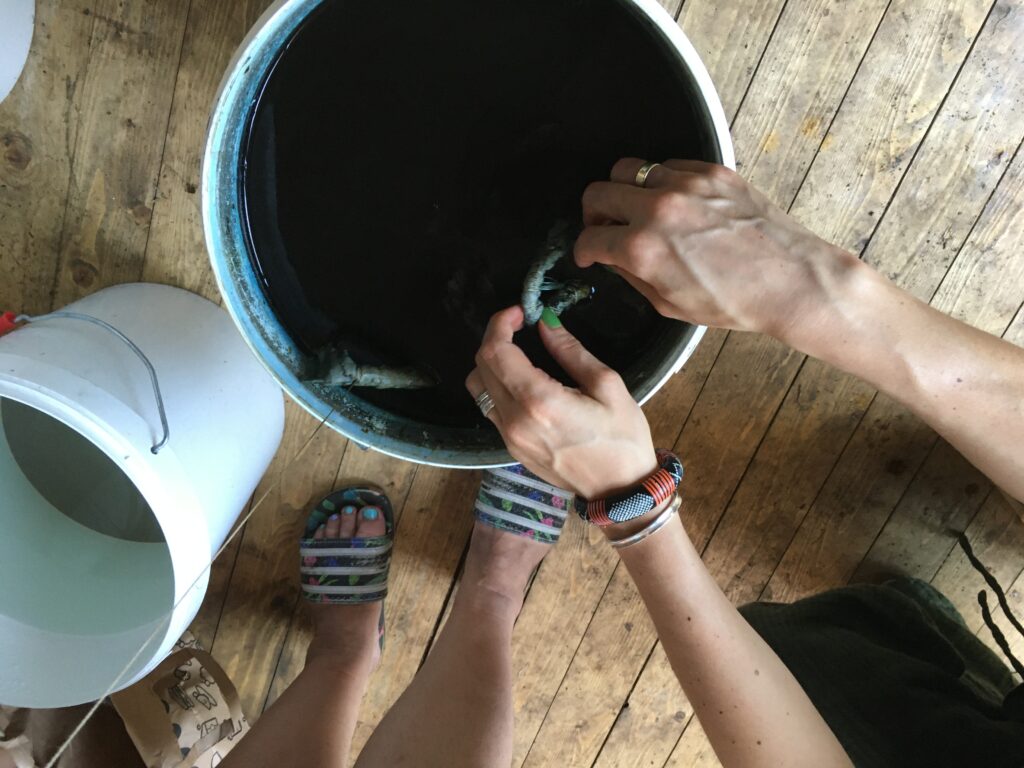
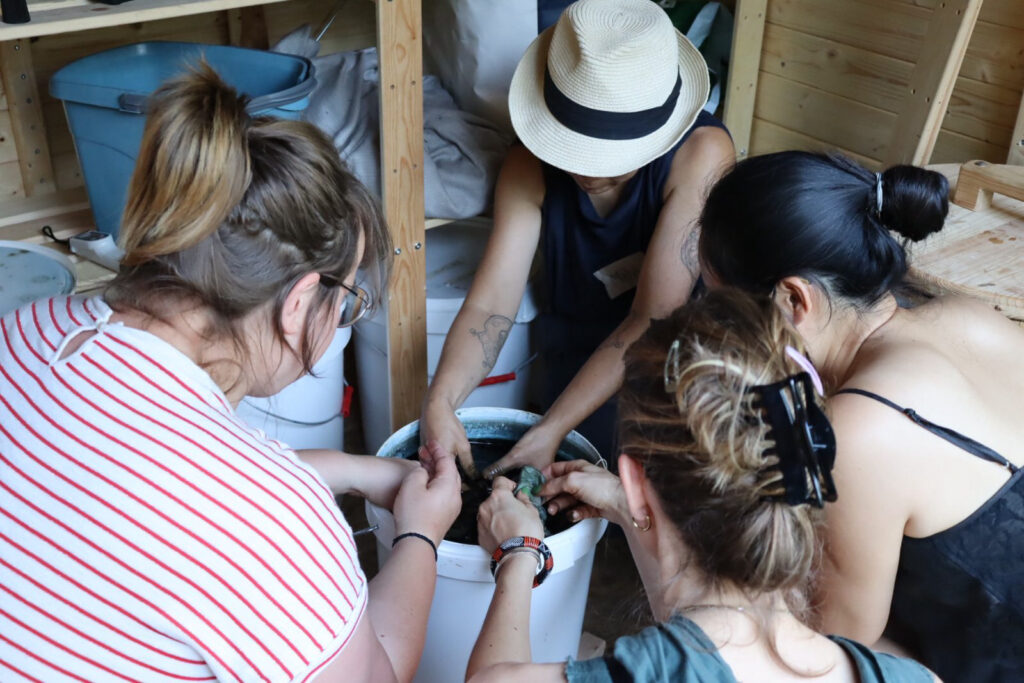
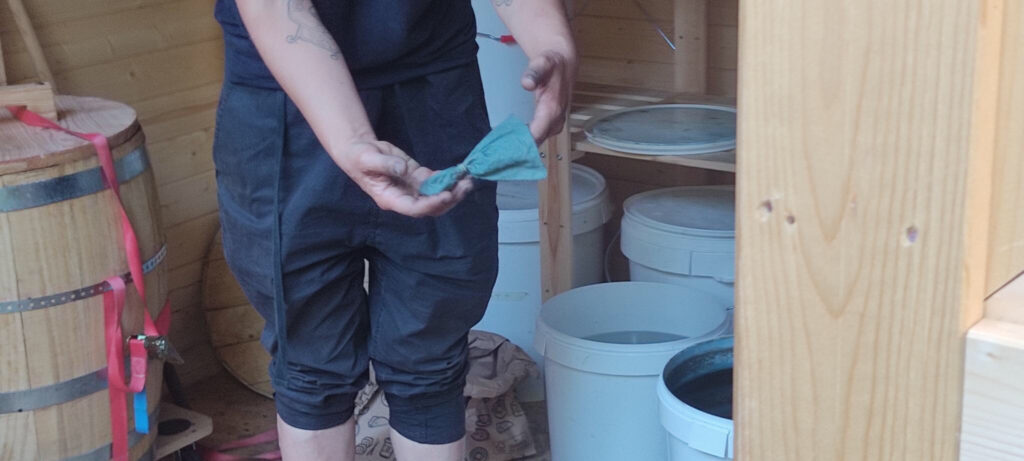
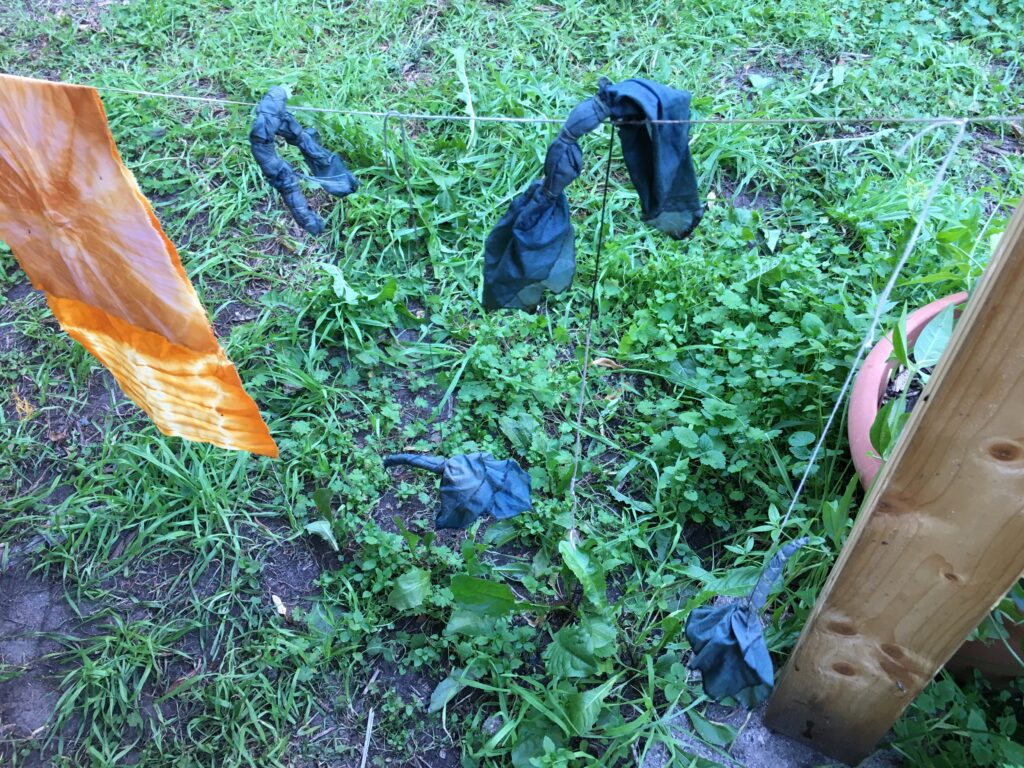
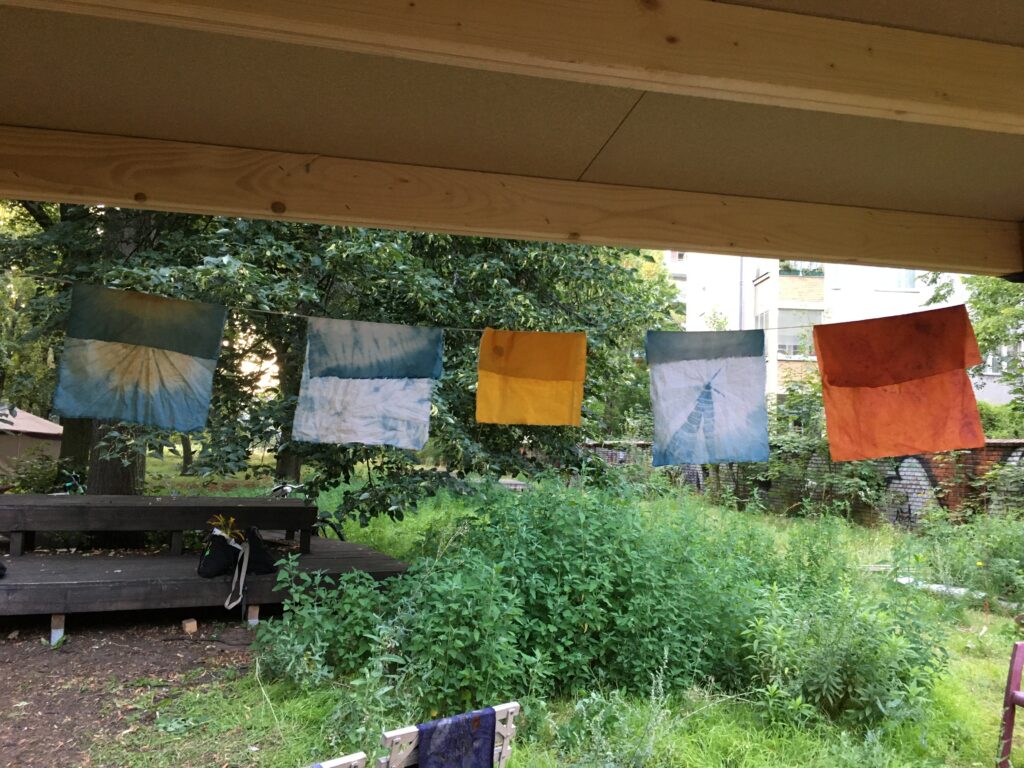
photo by Joel, Madlen, Sarah, Xin and Mika